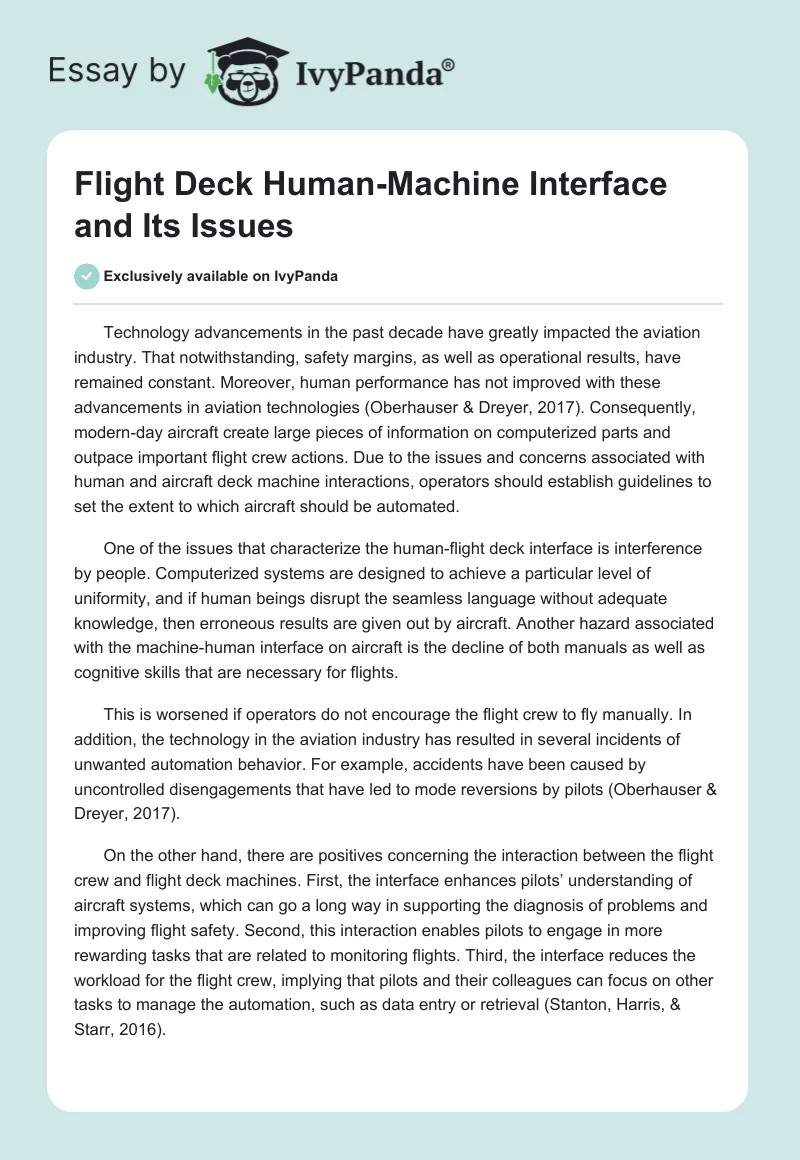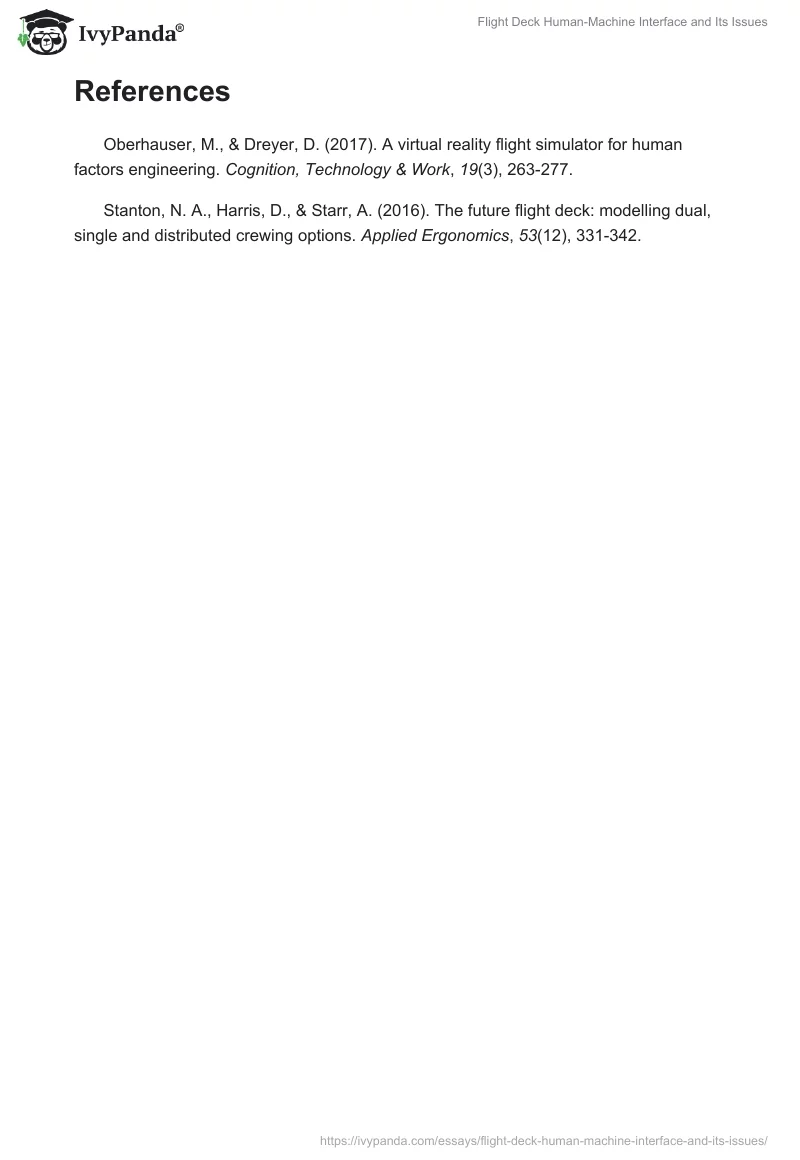Technology advancements in the past decade have greatly impacted the aviation industry. That notwithstanding, safety margins, as well as operational results, have remained constant. Moreover, human performance has not improved with these advancements in aviation technologies (Oberhauser & Dreyer, 2017). Consequently, modern-day aircraft create large pieces of information on computerized parts and outpace important flight crew actions. Due to the issues and concerns associated with human and aircraft deck machine interactions, operators should establish guidelines to set the extent to which aircraft should be automated.
One of the issues that characterize the human-flight deck interface is interference by people. Computerized systems are designed to achieve a particular level of uniformity, and if human beings disrupt the seamless language without adequate knowledge, then erroneous results are given out by aircraft. Another hazard associated with the machine-human interface on aircraft is the decline of both manuals as well as cognitive skills that are necessary for flights.
This is worsened if operators do not encourage the flight crew to fly manually. In addition, the technology in the aviation industry has resulted in several incidents of unwanted automation behavior. For example, accidents have been caused by uncontrolled disengagements that have led to mode reversions by pilots (Oberhauser & Dreyer, 2017).
On the other hand, there are positives concerning the interaction between the flight crew and flight deck machines. First, the interface enhances pilots’ understanding of aircraft systems, which can go a long way in supporting the diagnosis of problems and improving flight safety. Second, this interaction enables pilots to engage in more rewarding tasks that are related to monitoring flights. Third, the interface reduces the workload for the flight crew, implying that pilots and their colleagues can focus on other tasks to manage the automation, such as data entry or retrieval (Stanton, Harris, & Starr, 2016).
References
Oberhauser, M., & Dreyer, D. (2017). A virtual reality flight simulator for human factors engineering. Cognition, Technology & Work, 19(3), 263-277.
Stanton, N. A., Harris, D., & Starr, A. (2016). The future flight deck: modelling dual, single and distributed crewing options. Applied Ergonomics, 53(12), 331-342.


